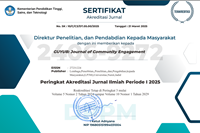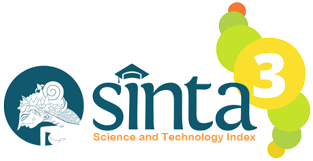PKM Training for Rural Economic Empowerment (TREE) dalam Pemberdayaan Masyarakat Pesisir Paiton Probolinggo
Authors (s)
(1) * Rojabi Azharghany
 (Universitas Nurul Jadid)
(Universitas Nurul Jadid) Indonesia
(2) Syaiful Ghufron (Universitas Nurul Jadid)
Indonesia
(3) Moh. Fauzi (Universitas Nurul Jadid)
Indonesia
(*) Corresponding Author
AbstractThe coastal community in Paiton District, Probolinggo Regency faces a development dilemma, even though the coastal area has great natural resource potential, especially the potential for coastal, fisheries and marine resources. This potential has not been exploited optimally and sustainably. Meanwhile, people, especially those living in coastal areas, Paiton District are still in high unemployment rates. The application of the Training for Rural Economic Empowerment (TREE) model is expected to overcome these problems. As a result, this empowerment program has implemented a development approach that ensures poor women and men get an inexhaustible resource of skills and knowledge that they can apply to increase their incomes and take a more active role in shaping their communities. Local development and gender approaches are heavily mainstreamed into the TREE program and therefore contribute to the empowerment of women and men. So that the Paiton coastal community can play a role in the development of their village through various fields including: economy, culture, social, religion, education, environment and health. |
Keywords
Full Text: PDF
Refbacks
- There are currently no refbacks.
Copyright (c) 2021 Rojabi Azharghany

This work is licensed under a Creative Commons Attribution-ShareAlike 4.0 International License.
This journal is licensed under

Creative Commons Attribution-ShareAlike 4.0 International License.








.png)
